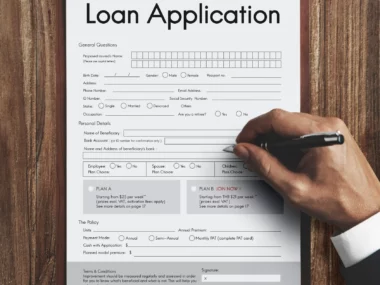Table of Contents
A home equity line of credit (HELOC) is a type of loan that allows you to borrow against the equity in your home. While HELOCs can be a great way to access cash when you need it, there are several misconceptions about these loans that can lead to confusion.
Before we explore some of the misconceptions about HELOC loans in the US, let’s take a look into the benefits of HELOC loans.
Benefits of HELOC Loans
- One of the biggest benefits of HELOC loans is that they often come with low or no closing costs. This can save you a significant amount of money compared to other types of loans.
- HELOC loans often come with lower interest rates than other forms of debt, such as credit cards or personal loans. This can help you save money on interest charges over time.
- With a HELOC loan, you only pay interest on the amount you use. This can be a great way to save money if you don’t need to borrow the full amount available to you.
- HELOC loans offer flexible and easy access to funds for various purposes. You can use the money for home improvements, college education, a home renovation, or anything you want.
- If you use the money from your HELOC loan for home improvements, you may be able to deduct the interest payments on your taxes. This can help you save money on your tax bill.
Here are ten common misconceptions about HELOC loans in the US:
1. Approval is guaranteed
One of the biggest misconceptions about HELOCs is that approval is guaranteed. While it’s true that HELOCs are secured by your home, lenders still need to evaluate your creditworthiness before approving your application.
2. You need to wait years to borrow a HELOC
Another common misconception is that you need to wait years before you can borrow against your home’s equity. In reality, you can apply for a HELOC as soon as you have enough equity in your home.
3. You can’t deduct interest payments on a HELOC
While it’s true that the tax laws around HELOCs have changed in recent years, you can still deduct interest payments on a HELOC in many cases. However, there are some restrictions on this deduction.
4. HELOCs and home equity loans are the same
HELOCs and home equity loans are often used interchangeably, but they’re actually two different types of loans. A home equity loan is a lump sum loan that’s repaid over time, while a HELOC is a revolving line of credit.
5. You always need a full home appraisal
Finally, many people believe that they need to get a full home appraisal before they can apply for a HELOC. While an appraisal may be required in some cases, it’s not always necessary.
6. HELOCs are only for home improvements:
One common misconception is that HELOCs can only be used for home improvement projects. While using a HELOC for home renovations is a popular choice due to potential tax advantages and the potential to increase your home’s value, the funds from a HELOC can be used for various purposes, such as debt consolidation, education expenses, or even a vacation. The flexibility of a HELOC allows you to use the funds for your financial needs, as long as you manage them responsibly.
7. Interest rates are always variable:
While it’s true that many HELOCs come with variable interest rates, fixed-rate HELOCs also exist. These fixed-rate options can provide borrowers with predictable monthly payments and protection against potential interest rate hikes. It’s essential to explore both variable and fixed-rate options and consider your financial goals and risk tolerance when choosing the most suitable HELOC.
8. HELOCs are only available for homeowners with high credit scores:
Another misconception is that only homeowners with high credit scores can qualify for HELOCs. While having a good credit score increases your chances of approval and favorable terms, some lenders offer HELOCs to borrowers with lower credit scores as well. Lenders may consider factors beyond credit scores, such as the amount of equity in your home, your income, and your debt-to-income ratio. It’s worth exploring different lenders and understanding their eligibility requirements to find a HELOC that suits your situation.
9. Closing costs are excessive:
Some individuals believe that the closing costs associated with HELOCs are exorbitant. While there are closing costs involved, such as appraisal fees, title fees, and application fees, they are typically lower compared to those associated with a mortgage. Additionally, some lenders may offer promotions or incentives to cover or reduce these costs. It’s important to review and compare the closing costs among different lenders to find the most cost-effective option.
10. HELOCs are only available for primary residences:
While primary residences are commonly used as collateral for HELOCs, it’s possible to obtain a HELOC on a second home or an investment property. The terms and conditions for non-primary residence HELOCs may vary among lenders, but it’s worth exploring these options if you own additional properties and want to tap into their equity.
In conclusion, there are several misconceptions about HELOCs that can lead to confusion and misunderstandings. By understanding these misconceptions and learning more about how HELOCs work, you can make an informed decision about whether this type of loan is right for you.







2 comments
inventors of all time american inventors.
Step into the World of Real Money Casino Play Online
new uk casino sites http://www.topliveroulette.com/.